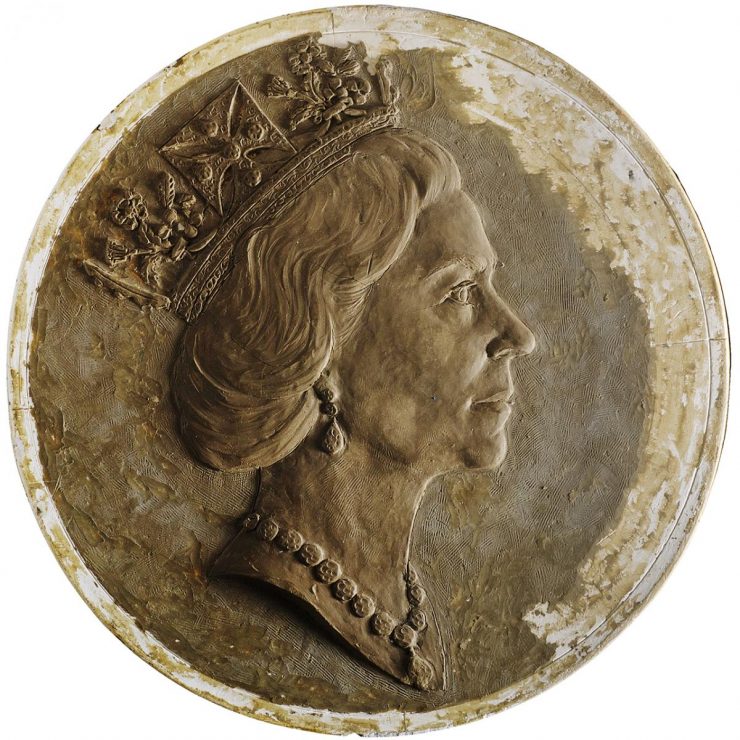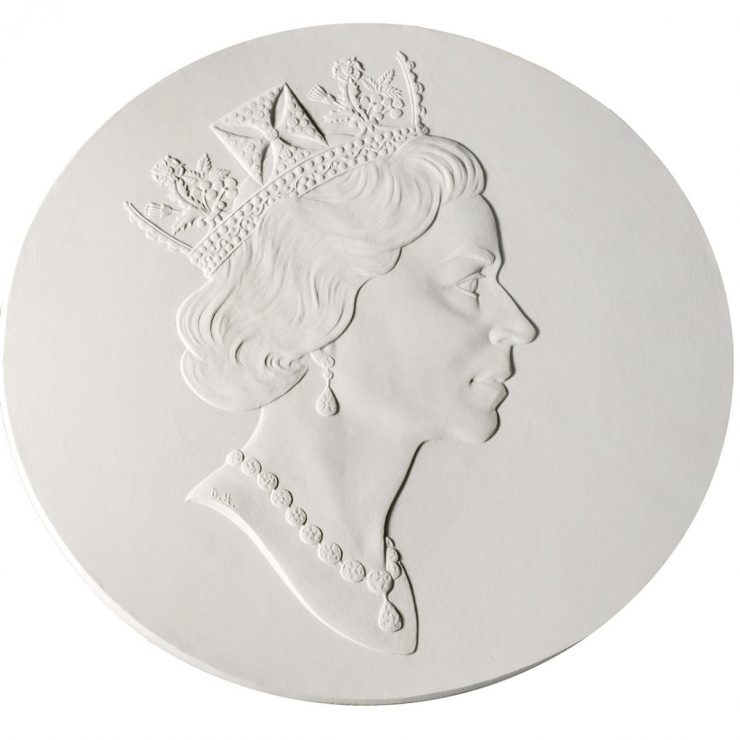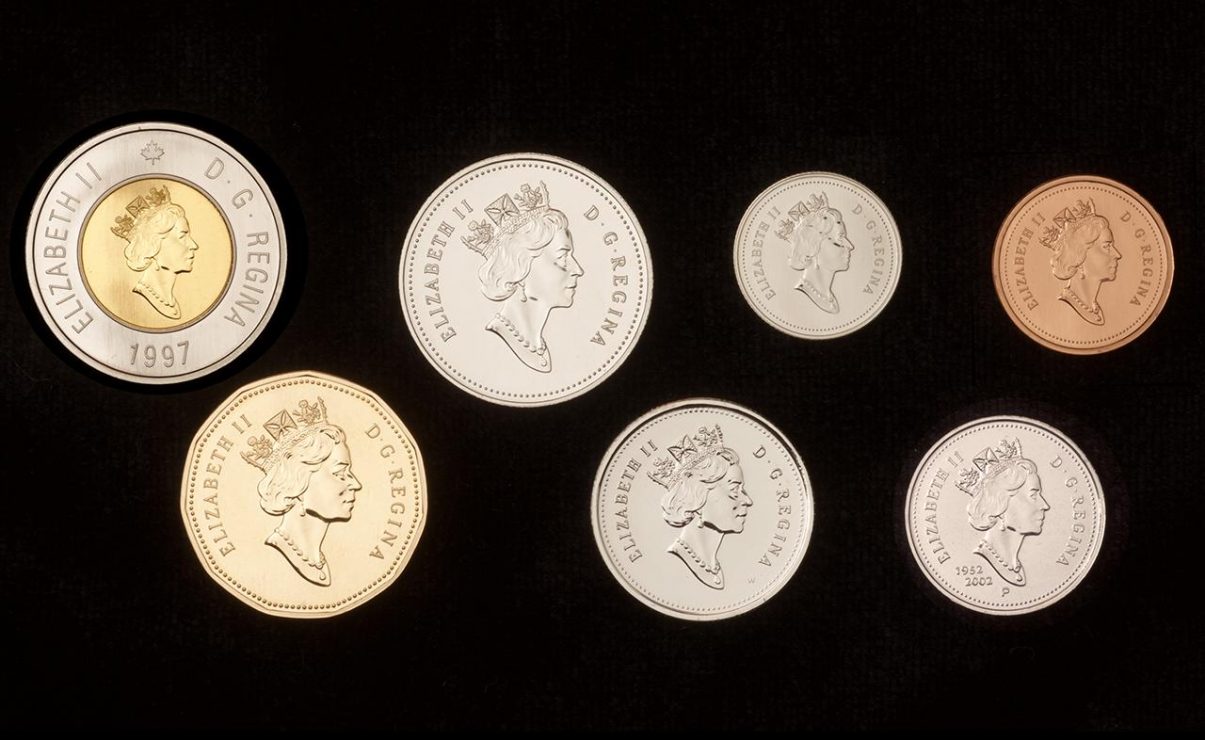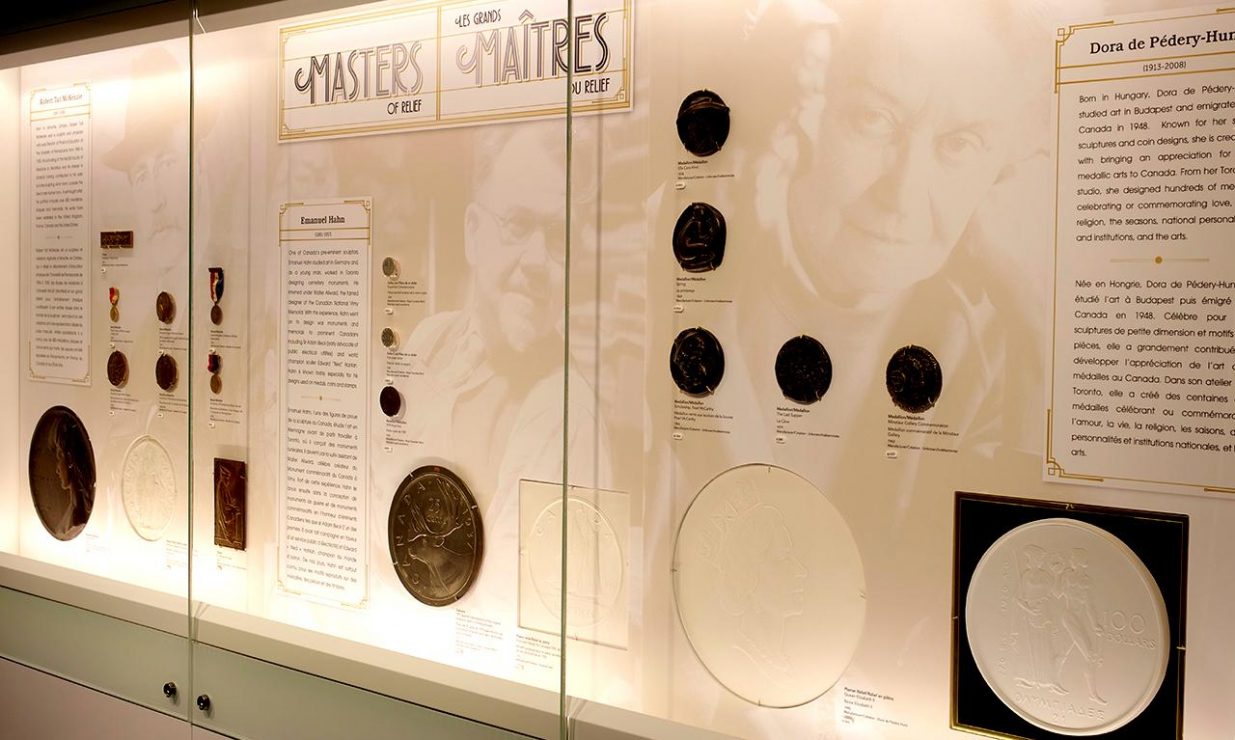Sculptor Dora de Pédery-Hunt
You will not see Dora de Pédery-Hunt’s signature on any coin, but you will see her initials on the Queen’s shoulder.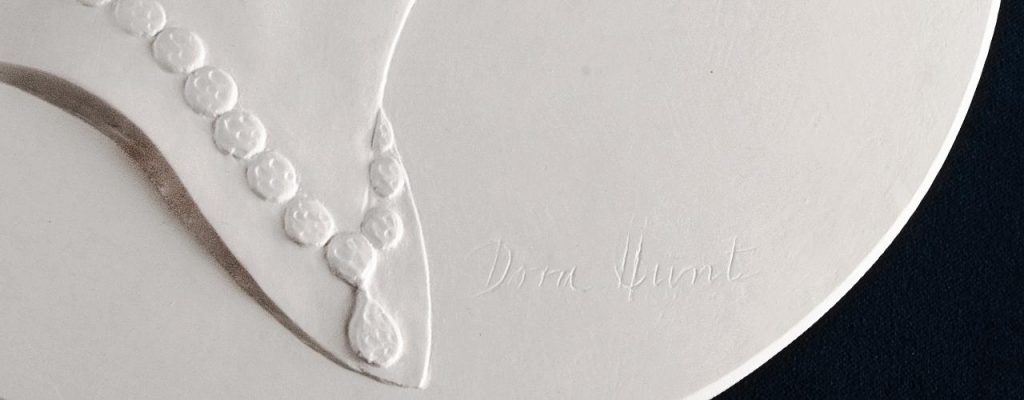
Limited Edition plaster reproduction of working model, #21 of 275. (NCC 2009.020.003)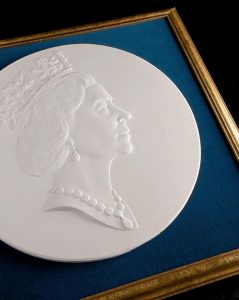
Dora de Pédery-Hunt’s work is as familiar as the change that jingles in your pocket. In all likelihood, you have come in contact with her work while using coins to pay for your morning cup of coffee. Dora de Pédery-Hunt was the first Canadian artist to design and sculpt an effigy of Queen Elizabeth II for coinage. Incidentally, this was the first time someone other than a British citizen had designed an official depiction of Queen Elizabeth II for this purpose.
When the Royal Canadian Mint (RCM) selected Dora’s design, she painstakingly began working on a clay model. All of the details had to be carefully considered, as the depth of the relief had to be suitable for producing coins. This model was then captured in plaster, where additional refinements could be made. Any errors could easily be corrected at this stage with the addition of more plaster. The size of the plaster is usually several times larger than the actual coin in order to capture all of the fine details.
At the time, there were many steps between the plaster model and the production of coins. Today, the process has been significantly refined. The plaster model is scanned in 3D and any final corrections or enhancements can be made digitally. Guided by this digital file, an engraving machine cuts the design into a piece of steel at the correct size of the coin. Known as a reduction punch, this piece of steel is then used to make the dies which will actually strike the coins. The tremendous pressure used to strike the coins wears down the dies, so the mint will periodically use the punch to create new dies.
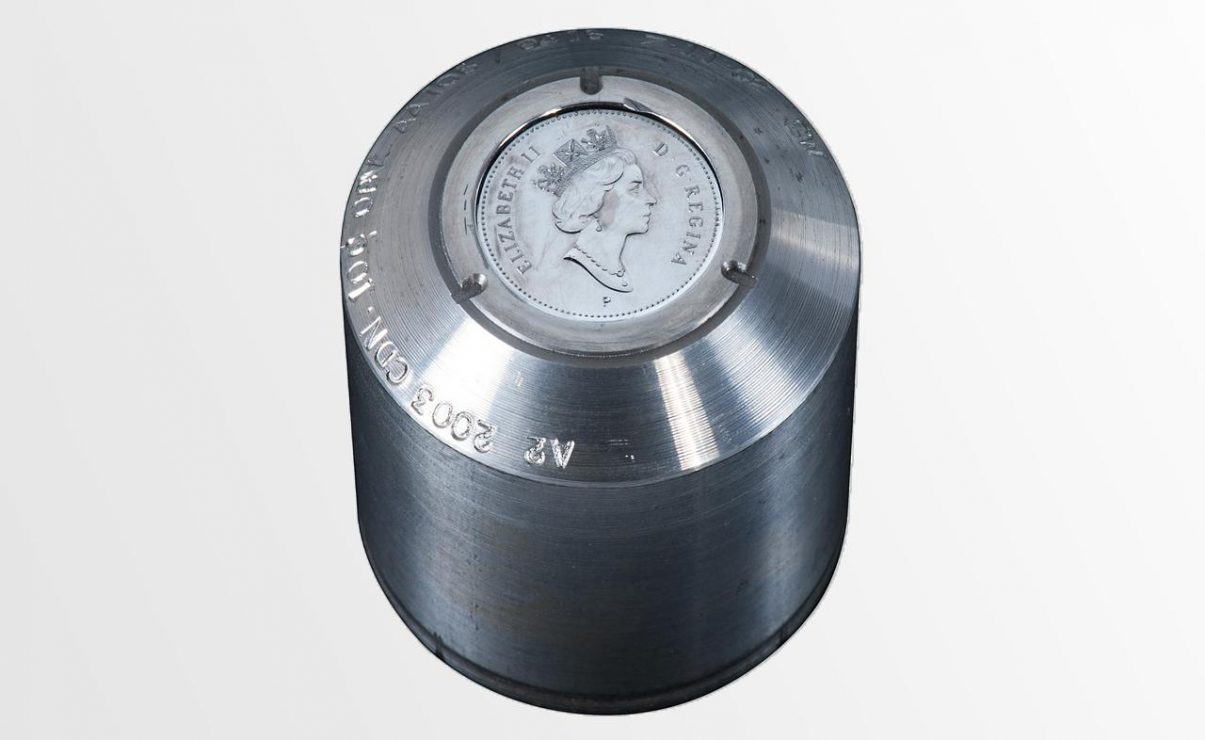
In 1999, the “P”, under the portrait on this punch, was added by the RCM to indicate a change in metal from nickel to multi-ply plated steel. (NCC 2010.058.006)
This portrait has appeared on all Canadian coins minted between 1990 and 2003.
The Museum Blog
Wrap-up, 2019
By: Graham Iddon
The Bank of Canada Museum set some very ambitious goals at the end of 2018. We have managed to achieve more in one year than we had since we opened in 2017.
Private Atkinson’s War
By: Graham Iddon
Private Edward Atkinson’s example of trench art is what is called a “love token”—a souvenir made from a coin. It’s one man’s personal wartime experience expressed through a pocket-sized medium.
Bank Note/Billet de banque
By: Graham Iddon
The first Canadian paper money was issued in 1817, and for the next 120 years, the vast majority of Canadian bank notes were only in English.
RCNA Convention, 2019
By: David Bergeron
Bank of Canada Museum will be at the 66th annual convention of the Royal Canadian Numismatic Association (RCNA).
Landscape Engraved
By: Graham Iddon
Retaining the landscape format but showing human activity and intervention transformed the imagery into an extended portrait of Canada and Canadians.
The Hunting of the Greenback
By: Graham Iddon
During World War Two, the Bank created the Foreign Exchange Control Board (FECB). One of its major tasks was to find as many US dollars as possible to pay for American imports.
What goes up…
By: Graham Iddon
Economic bubbles continued to pop up regularly throughout history, and still do today.
